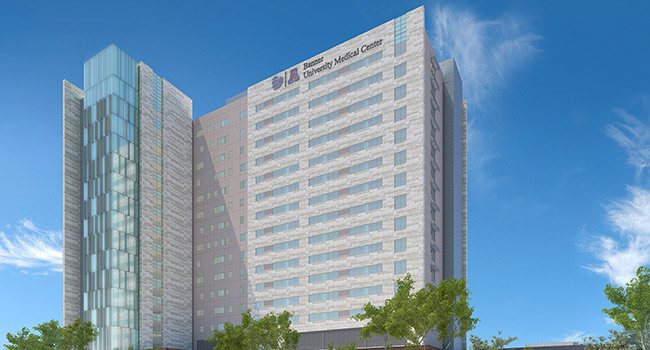 It has been said that two minds are better than one.
It has been said that two minds are better than one.
This concept holds true for Banner Health, which has saved millions of dollars and precious time by utilizing an integrated project delivery (IPD) process for two of its latest multi-million-dollar developments.
An IPD is defined as a collaborative approach that combines systems, business structures, practices and experts from a multitude of different fields during all phases of design, fabrication and construction that harnesses the talents and insights of all participants to optimize project results, increase value to the owner, reduce waste and maximize efficiency.
Steve Eiss, senior project manager for Banner Health, describes it as a “never-ending idea process.”
He says, Banner first used an IPD on phase two of the $60 million Banner MD Anderson Cancer Center in Gilbert, saving $1.5 million and accelerating the delivery date of the project. In fact, phase two was built two times faster and for eight-percent less than phase one of the project.
Banner has already saved millions more by again using an IPD at the $418 million Banner-University Medical Center Phoenix (BUMCP), which began construction in March 2014 and includes a new emergency department and 16-story patient tower.

Like the $60 million project in Gilbert, Banner teamed up again with HKS Architects and DPR Construction along with 29 subcontractors for the BUMCP project.
“Just having an IPD doesn’t make a project successful though,” says Charlie Thompson, senior project manager with DPR Construction. “You need the collaborative component.”
He attributes the success of Banner’s IPDs to its leadership style that encourages innovative ideas from everyone regardless of their role on the project.
“This tends to be more of a team approach with informed design,” Thompson explains. “Anybody in the room can have a voice and ask questions to try to get a better product, which becomes a cultural piece.”
That room is actually a trailer located on the job site that serves as the headquarters and new offices for all parties involved on the IPD team, which is commonly referred to as the “big room.”
“We had about 55 people working in the big room from 9-10 different companies,” explains Eiss, which includes the owner, general contractor, architects, engineers, and subcontractors for structural steel, electrical, mechanical, fire sprinkler, framing/drywall and other design-assist partners.
All of whom were brought in on the front end of the project, and required to work in the big room every Tuesday through Thursday to brainstorm and flush out ideas.

“Part of having a successful IPD is not stopping innovation no matter where you are on the project,” says John Niziolek, principal and director of HKS Architects’ Phoenix office. “We keep pushing each other to come up with better ways to do things.”
Everyone on the IPD team understands the intent and vision of the project and collectively work towards that goal.
“We all put the project before our companies,” explains Eiss. “If you make decisions on behalf of the project all the time, then it will be successful and in turn make your company successful.”
EXAMPLES OF SAVINGS
Millions of dollars have already been saved at BUMCP through successful collaboration, which the IPD team tracks through an innovation log that shows cost savings.
All of those ideas and solutions, however, are figured out before finalizing the project’s budget, says Eiss. Then on a biweekly basis, the design-assist trade partners must prove the project is trending well from a budget standpoint.
Overall, Eiss, Niziolek and Thompson agree that without using an IPD, some of the project’s most innovative features would have never happened.
For instance, the original project plans called for running the facility’s utilities underground, but a mechanical contractor pointed out that every elbow needed for the underground pipe would cost $10,000 each.
“If we were not an integrated project team, we would have absolutely run our utilities underground,” says Eiss.
Instead, the team built a bridge to run the utilities through, which saved approximately $4.5 million and will allow Banner to open the building four-months earlier than the original plans projected.
The old plans also called for the relocation of the hospital’s existing computer hub, but the team collectively figured out a way to leave it in place and build on top and around it, saving the project an additional $5 million.
Another unique aspect to BUMCP, says Eiss, is how the IPD team is able to look at the construction process a little bit more like a manufacturing process. By turning portions of the work into a manufacturing process instead of an unique build process, it helps from a safety, cost and schedule standpoint, he adds.
“We are all experts in our own fields,” says Thompson, “and it helps to have those experts in the room to help make sure you make those right decisions.”




